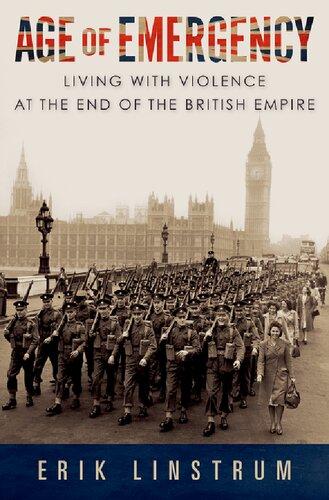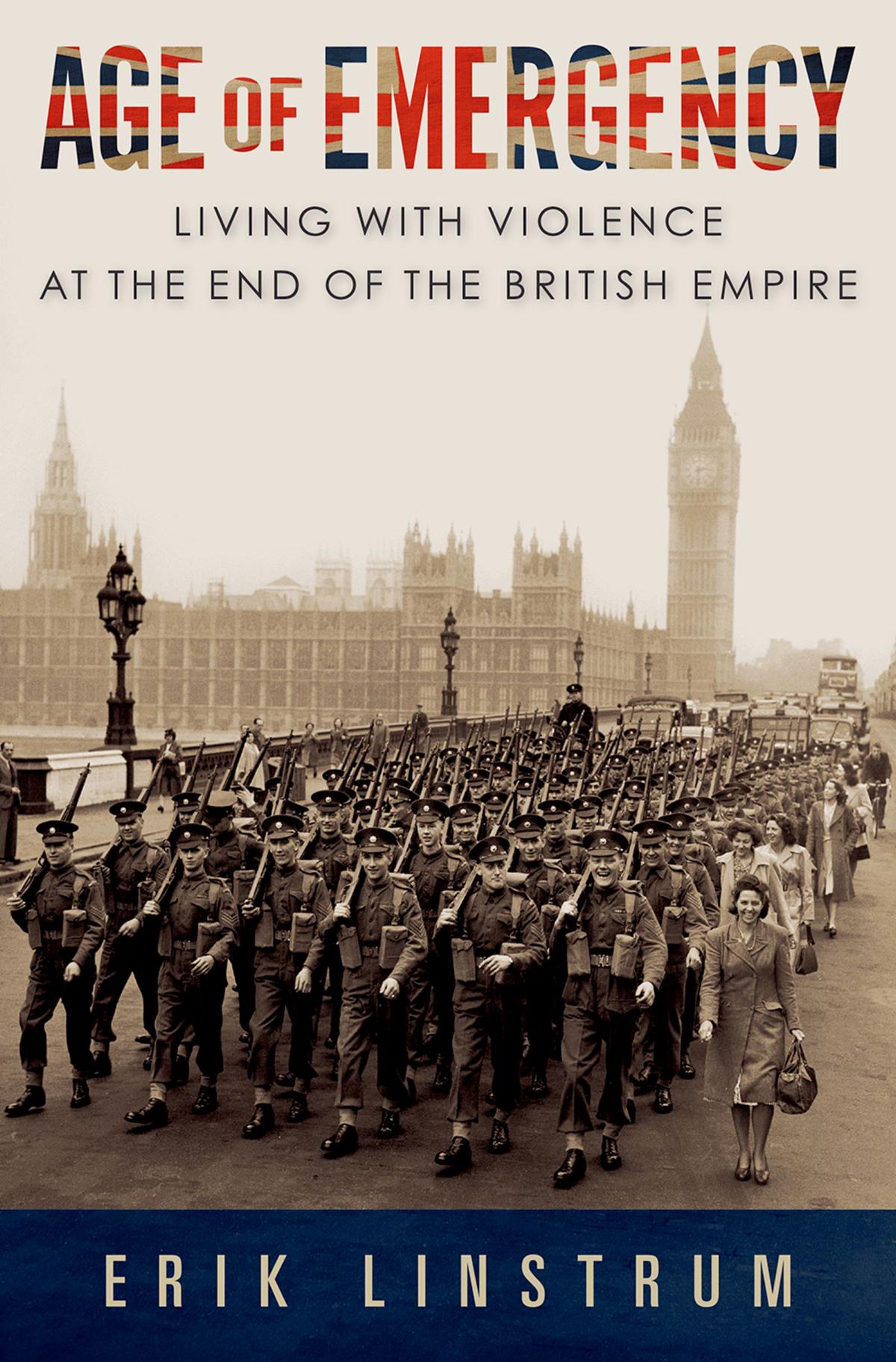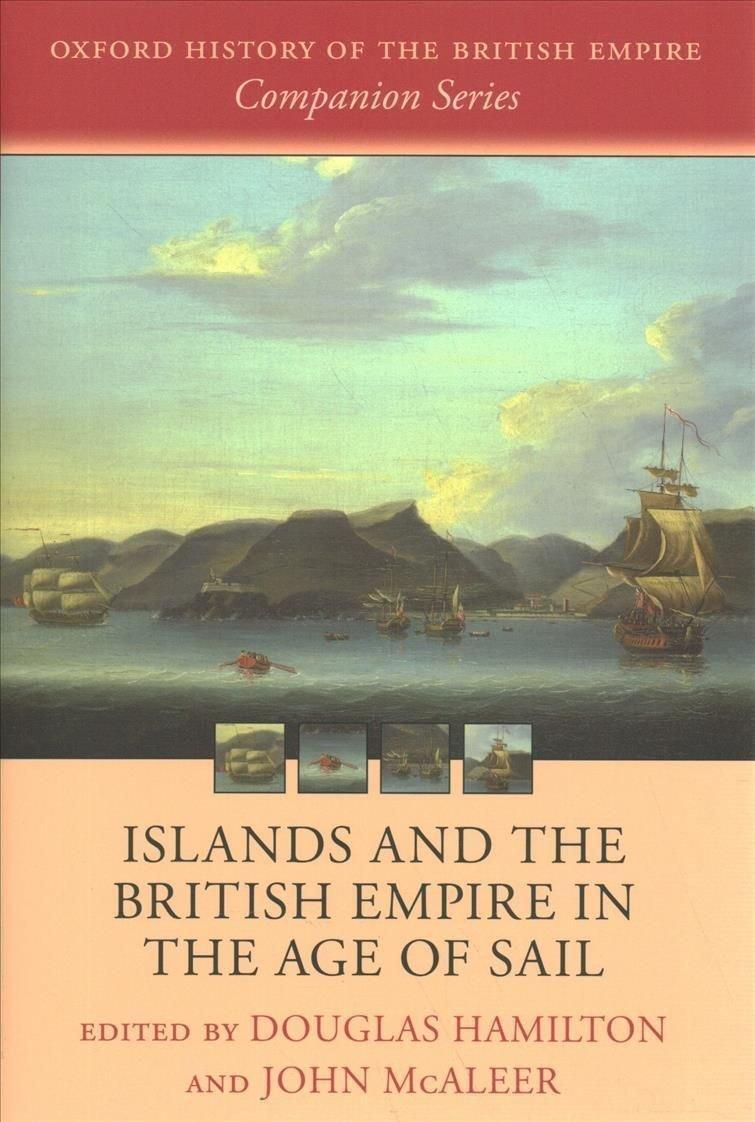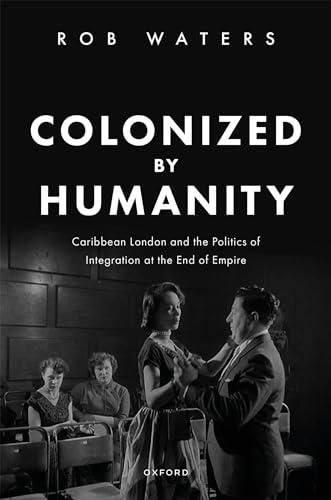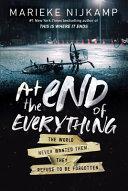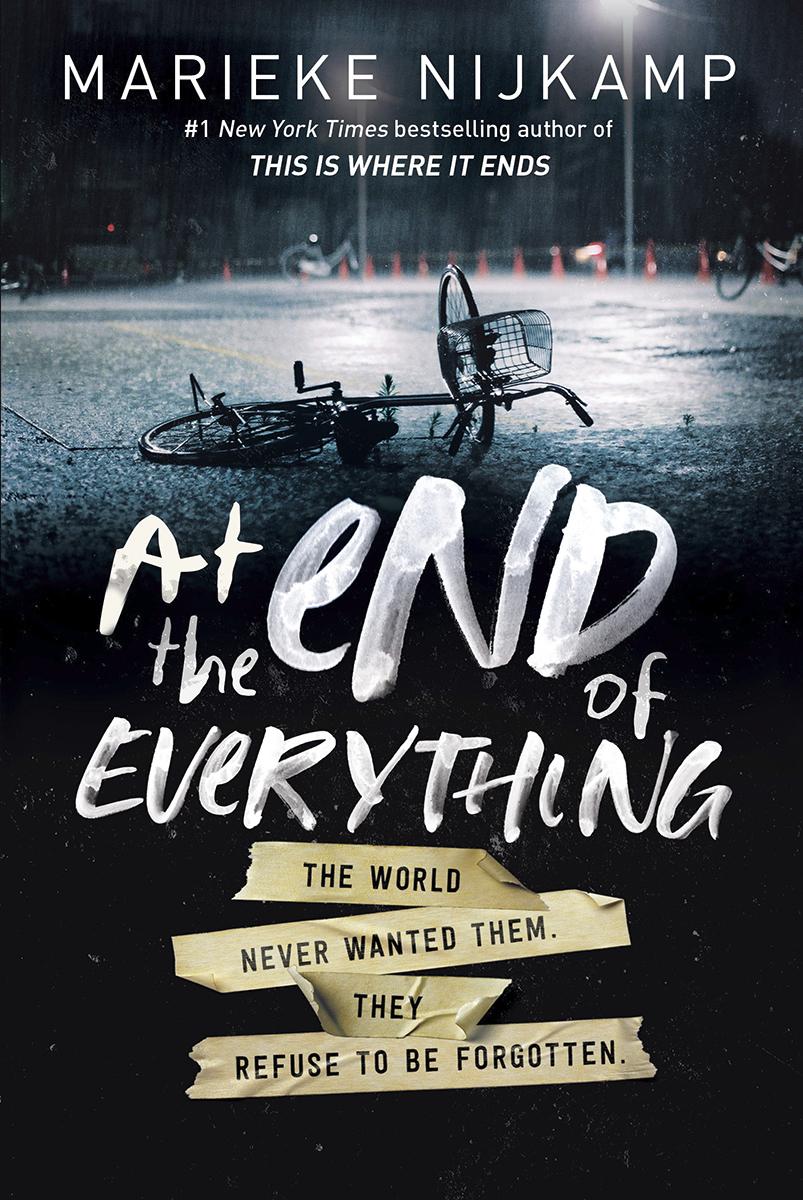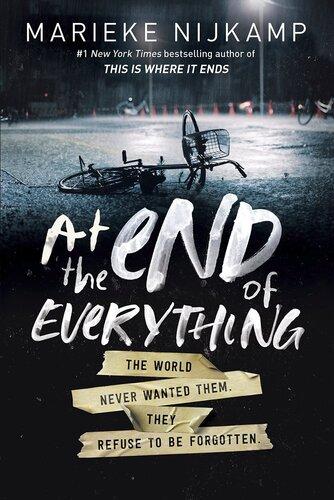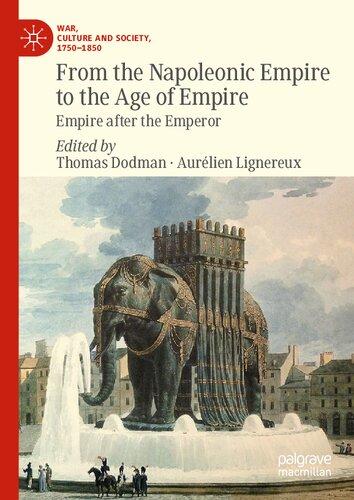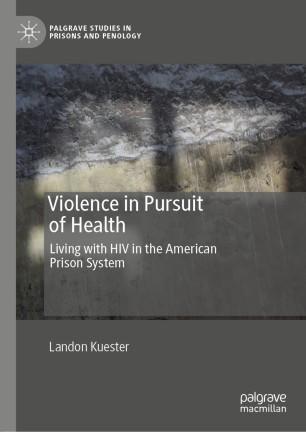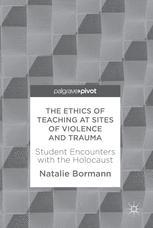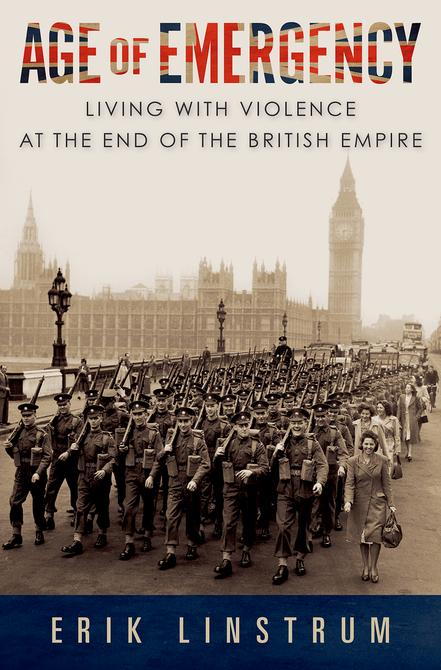Introduction
The Wars Were Like a Mist
For one Yorkshire woman in the 1950s, the violent end of the British Empire was never entirely out of mind. A January day in 1953 began with breakfast in bed. “Then got up and pottered around,” Mary Towler noted in her diary. “Things in Kenya seem very grim.” On another winter’s day five years later, she “spent some time in the garden. Cyprus seems to have quieted down for the moment. One miniature daffodil in bloom.” Nine months after that, she watched her husband go off to London on the early train, then wondered whether “there is some truth in the stories of Cypriot suspects not being treated well. You’ve only to listen to ordinary people saying what they would do to the Cypriots.” The banality of the everyday—domestic chores, blooming flowers, the comings and goings of friends and relations—mingled with fleeting but uneasy acknowledgments of war in the colonies.1
If every diary is a performance, Mary Towler’s was no exception. The Mass Observation project that invited Towler to chronicle her thoughts was itself designed to produce a certain idea of everyday life: a collective identity forged through the reception and reworking of mass media.2 For that reason, her diary can provide few definite answers about the experience of decolonization in Britain. It can, however, can raise questions. How did she learn about the distant colonial wars whose twists and turns she recorded? Was it lack of information or lack of interest that marked the limits of her knowledge? If anything troubled her for more than a moment, was it the seeming endlessness of war, the brutality committed in Britain’s name, or the long, slow retreat of empire itself?
Colonial violence was a fact of life in postwar Britain. For most people, it demanded only occasional attention amid the press of more immediate
concerns. But it was never altogether absent. When the Second World War ended in 1945, another era of conflict began. It lasted for almost two decades as uprisings threatened British rule in colonies across the world, in Palestine, Malaya, Kenya, Cyprus, and Aden. Tens of thousands of British soldiers, conscripts as well as career soldiers, were dispatched to one trouble spot after another. New wars began before their predecessors were finished. The same grim tactics were tried again and again with uncertain results. Lurking behind it all was the suspicion that the fighting dramatized Britain’s decline as a global power rather than reversing it. For the British people, colonial war was not a series of events so much as an atmosphere: geographically diffuse, morally problematic, impervious to neat endings or declarations of victory. What novelist Graham Greene wrote from Malaya in 1950 could stand as an epitaph for the age: “The war was like a mist; it pervaded everything; it sapped the spirits; it wouldn’t clear.”3
There were other threats to peace in those years, including the Korean War and the nuclear rivalry of the Cold War. But the seeming endlessness of war in the colonies solidified a sense that the stability promised in 1945 had proven illusory. As a Lancashire woman asked her diary in 1948, after hearing the latest news from Palestine: “Another lot of youngsters growing up—for what? To go through all war’s danger & agony again?” She could not help thinking that “the war is not yet over, it’s only a lull.”4 When a University of London sociologist carried out a study of English teenagers in 1956, she asked them to write essays from the perspective of their older selves, “to look back over your life and say what has happened to you.” Several responses referred to colonial war. One envisioned a thrilling though treacherous spell as a soldier in Cyprus, chasing “bomb-throwing terrorists” through “the winding back streets of Nicosia” and narrowly missing an assassin’s bullet. Another darkly predicted that the effort to maintain imperial power by force would be futile. “By now Britain had loss [sic] nearly all her Empire,” the student wrote. “I am glad my days are to an end [sic] because this world is full of fear and trouble.”5 For some, imperial decline was synonymous with racial decline. Visiting the common room at Nuffield College, Oxford, in 1953, business leader Raymond Streat noted “a sense of foreboding” shortly after the outbreak of the Mau Mau rebellion in Kenya. Streat and his hosts shuddered at the thought of “millions of primitive uneducated Africans” on the march and worried that “once the tide was blown up by a heavy wind, it could sweep all defenses aside.”6 Newspaper magnate Lord Beaverbrook, tipsy at a country house party four years later, was gripped by racial melancholy after noticing a First World War–era atlas on his bookshelf. “Red everywhere,” he exclaimed.
“Britain ruled the world!” Then he turned the page to an image of stereotypically primitive-looking Africans. “Savages!” Beaverbrook shouted. “We’ve given it all to them.”7
The question was whether the waning of British power should be accepted with fatalism or resisted with force. Public opinion reports from Conservative Party agents across the country showed broad support for military action to prop up imperial power. The muscular language favored by Tory operatives hinted at the political dividends they sensed in an ongoing war for empire. They saw “firm action” in Malaya as a popularity booster for the new Churchill government in 1952, “tough policy” in Kenya as a safe position later that year, and “strong action” in Cyprus as a political winner in 1955.8 On the other end of the political spectrum, Daily Mirror editor Hugh Cudlipp thought that his predominantly left-leaning and working-class readers disliked military interventions in theory but rallied to the flag in practice. Once British troops were in the field, he observed, they “were all for bashing the Wogs.”9
Electoral history seemed to confirm those judgments. The governing Conservative Party won easy victories in 1955 and 1959 despite efforts by some Labour campaigners to portray them as callous warmongers. The 1959 election—which took place just seven months after colonial guards beat eleven African prisoners to death at a detention camp in Hola, Kenya—dealt an especially harsh blow to hopes for a collective rejection of colonial violence. The nascent industry of opinion polling detected no groundswell in that direction, either. A 1953 Gallup poll found that 41 percent of respondents approved of the government’s handling of the Mau Mau uprising, while 23 percent disapproved and 36 percent did not know.10 Even those figures almost certainly understate the popularity of colonial war because some who expressed disapproval favored more harshness rather than less. In a 1956 poll that found 51 percent of the sample dissatisfied with government actions in Cyprus, only 20 percent judged them “too severe,” while more than twice as many (44 percent) found them “not severe enough.” Backing for greater severity cut across party lines, including 37.5 percent of Liberals, 40.5 percent of Labourites, and 50 percent of Conservatives.11
But if war for empire could draw on powerful reserves of nationalism, racism, and jingoism, other sentiments were always present too. Anxiety, guilt, shame, and confusion shadowed the waging of war in the colonies, a tumultuous “inner life of decolonization.”12 Amid broad support for colonial war, Conservative Party agents nervously registered signs of disquiet. An internal public opinion report in January 1954 described “a feeling of uneasiness over Kenya” in the London area as press reports of “alleged ill-treatment
of Mau-Mau suspects by British soldiers [were] causing concern.”13 Victories over insurgents—if they could be termed victories at all—inspired ambivalence rather than triumphalism when they finally arrived. With the announcement of a conclusion to the Cyprus conflict in 1959, Tory operatives detected “relief” along with suspicion that “a settlement of this sort might have been reached earlier and the lives of many British soldiers and civilians saved.”14 The uncertainties in public opinion reflected deeper tensions. Wars against brutal terrorists were being fought with brutal methods. Wars to defend empire concluded with the dissolution of empire.
Some voices, to be sure, were outraged rather than ambivalent. “I’ll tell you now what I find very painful in the Daily Papers — Our war in Cyprus,” novelist John Cowper Powys exclaimed in 1955. “Why the hell don’t we clear out of Cyprus as we did out of the Sudan & the Nile and India?”15 Strains of anticolonial and antiwar politics, isolated or co-opted during the Second World War, acquired new life with the moral shocks of counterinsurgency. When an acquaintance dismissed the Hola massacre on the grounds that the victims were probably murderous insurgents, Liberal MP Violet Bonham Carter retorted that the “character of the victim” was irrelevant: “it is the degradation of those who were able to beat them to death which matters.”16 For others, brutality proved unsettling on account of geopolitical degradation more than moral degradation; it signified the loss of power through the ineffectiveness of violence.17 Racial prejudice was perfectly compatible with objections to colonial war on these grounds. “We cannot suppress the darkies by shooting them,” ex-politician Harold Nicolson wrote in his diary shortly after Hola.18
Through the personal experiences of family and friends, the debates waged by politicians and activists, and the stories told in newspapers, books, radio, television, and theatre, unrest in the colonies did not stay there. The challenge for the British people was to find ways of living with the violence that they could not simply ignore. This book tells how, for the most part, they succeeded.
* * *
What does it mean to live in a society at war? It was a particular kind of war that occupied Britain for two decades after V-E Day: not “total wars” that transformed civilian life but “small wars” of the kind that had long raged on the frontiers of empire.19 Although that Victorian-era term had given way by the 1950s to talk of “counterinsurgencies,” “emergencies,” and “lowintensity conflicts,” the principle remained unchanged. It was guerilla fighters
or insurgents who challenged British rule, not professional armies trained on European lines and equipped with the latest technology. The wars of decolonization therefore molded a very different kind of home front than the Second World War had. Anticolonial insurgents posed virtually no threat to the lives of civilians in Britain. In the colonies, they avoided big battles, relying instead on targeted raids and assassinations. As a result, the British troops deployed to combat insurgencies numbered in the tens of thousands, far fewer than the 2.9 million who served in uniform between 1939 and 1945. It was not people living in Britain but colonial subjects overseas who bore the heaviest burdens in these conflicts.20
Faced with the relatively small scale of colonial wars—small, that is, from the British perspective—historians have minimized the extent to which people in Britain even noticed them. Conflict in the colonies, one writes, was “far removed from the daily lives of the average inhabitant of the metropole.”21 Another argues that the wars of decolonization “left scarcely a trace in Britain’s public memory.”22 With the exception of Suez, it is said, no British colonial war after 1945 caused any significant controversy.23 These claims echo a longstanding assumption about the ease, even the peacefulness, of British decolonization in contrast to the traumatic experience of other European powers. As the story goes, no governments fell, no monarchies toppled, as the British Empire dissolved; it was indifference or approval, rather than anguish or loss, that possessed the public imagination at home.24 While historians have challenged this view in recent years by tracing the impact of decolonization in everything from the welfare state and the financial system to national identity and popular culture, the violence committed in Britain’s name overseas has not featured prominently in the reassessment.25
The self-flattering narrative of a peaceful end to empire—a deliberative “transfer of power” rather than a bloody, grudging struggle—has its parallel in the story long told about colonial warfare itself. A persistent myth among military strategists celebrated British counterinsurgencies for their restrained use of force: isolating insurgents from the rest of the population, winning the “hearts and minds” of civilians rather than alienating them, and so suppressing popular support for rebellion with a minimum of violence. While France in Algeria and the United States in Vietnam devolved into indiscriminate brutality, the “British way” seemed to promise something cleaner, cleverer, and more effective.26 When General David Petraeus famously revised the US Army Counterinsurgency Manual during the invasion of Iraq in 2004, he pointed to the post-1945 British campaigns in Malaya and Cyprus as models.27
Thanks to a pioneering wave of scholarship, however, the British tradition of counterinsurgency now looks far more violent—and far less exceptional—than conventional wisdom once held.28 Curfews, checkpoints, collective fines, house-to-house searches, and indiscriminate round-ups harassed civilians as well as insurgents. Hundreds of thousands of people were forcibly uprooted and moved into militarized settlements; tens of thousands more were held without trial, for years at a time, in detention camps. Judicial safeguards disappeared and the pace of executions quickened. Soldiers on patrol destroyed homes, wrecked food supplies, and fired their weapons with questionable justification. Police interrogators and camp guards tortured captive suspects. If the most repugnant tactics were not universal, they were not aberrations, either. Intense, widespread, often brutal violence marked the end of the British Empire.29
Could such things really happen without attracting notice or concern at home? It has become a cliché that Britain experienced nothing like the debates over the Algerian war that gripped France at the same time.30 Although controversy was not totally absent on the northern side of the Channel, it appeared sporadic and ephemeral by comparison; momentary outbursts arose from a few well-publicized incidents, such as the Hola massacre.31 Why the systemic violence affecting thousands more colonial subjects, for years at a time, caused little apparent disquiet, has been explained in various ways. Some insist that Britain’s wars really were smaller, quieter, and less brutal than those of other colonial powers.32 Others suggest that imagery in press coverage and popular culture, showing English-style domestic life under siege from bloodthirsty insurgents, made Malayan planters and Kenyan settlers more sympathetic figures than their equivalents, the pied noirs, in Algeria.33
But the most common explanation for complacency about colonial violence is also the most straightforward: the British public did not really know was happening. Critic Paul Gilroy memorably argued that the “violent, dirty, and immoral business” of empire was “repressed and buried,” generating a “hidden, shameful store of imperial horrors.”34 “It is only today becoming clear,” one historian writes, “how much information about the seamy side of empire was kept from people at the time.”35 Others argue that the abuses of decolonization were “hidden from view” or, at best, “dimly understood.”36 The revelation in 2011 that officials had removed thousands of sensitive files from colonies across the world when imperial rule ended, then concealed them for decades at an intelligence facility in the English countryside, seemed to prove the point. Unearthed documents about the counterinsurgency in Kenya turned out to contain evidence of atrocities that the British government had
long denied, leading to an unprecedented settlement of £19.9 million for the benefit of survivors. New details likewise emerged about the scale of document destruction; while officials retreating from empire absconded with some files, they shredded and burned many more.37 With a ruling elite so committed to keeping secrets, it is tempting to conclude that ordinary people never knew the extent of the violence carried out in their name.
But the state’s grip on the flow of information was never absolute. In fact, knowledge of colonial violence rippled through British society. Networks defined by ideology, by profession, by faith, and by family and friendship all played a part in disseminating it. These communities or “circles of knowing” each processed information about British wrongdoing in their own ways.38 They also contributed to the erosion of ignorance on a wider scale. Left-wing activists collected testimony from victims, printed pamphlets, held meetings and marches, and pressured politicians to take action. Some soldiers pasted photographs into albums; others penned letters to their parents; still others published memoirs of their experiences. Journalists recorded evidence in their notebooks, swapped stories with colleagues, and hinted at the truth in print and on the airwaves. Missionaries and aid workers witnessed atrocity, then drew colleagues back home into debates about the moral trade-offs of counterinsurgency. Playwrights, novelists, and screenwriters took audiences inside fictionalized versions of detention camps and interrogation rooms. Sometimes quietly and sometimes not, violence reached far beyond the conflict zones of empire.
Central to this history are the ambiguities of secrecy. Details about colonial violence were often treated as secrets. Officials worked energetically, and in many cases successfully, to keep them out of the press. When politicians, humanitarian leaders, and other influential figures learned about abuses through private channels, they tended to confer with government ministers behind closed doors rather than go public. But secrecy is never simply a matter of suppressing information; it also draws attention to that information, weaves networks of complicity around it, and confers a “charged status” on it.39 One reason for this is that the disturbing accounts that did emerge into public view were all the more shocking because others were kept quiet. Another is that the never-ending work of managing secrecy, policing the boundaries of what could or should be disclosed to the public, was never itself a secret. Bureaucrats, reporters, missionaries, soldiers, settlers, and other intermediaries found themselves in the position of having to decide whether they should publicize what they knew or stay silent. This is the paradox of secrecy in a liberal society. As historian Tom Crook puts it, “citizens know what
they cannot know.” Even if information deemed secret by the state is “never disclosed in its fullness,” liberal subjects can nonetheless “glimpse something of its existence.”40
Suppressing information about violence proved difficult for another reason as well. While officials sought to conceal the dark side of colonial war, they could not renounce publicity altogether, because they wanted to build popular support for the conflicts. Secrecy and propaganda feed each other: one creates the informational vacuum filled by the half-truths and manipulations of the other.41 The relationship between them assumed a particularly complex form in post-1950s Britain because the coercive dimensions of counterinsurgency were so entangled with the camera-friendly work of appealing to “hearts and minds.” Detention camps were simultaneously sites of punishment and rehabilitation. Intrusive searches, mass round-ups, and forced relocations turned communities upside down in the name of protecting them.
These contradictions meant that British civilians—aid workers, nurses, missionaries—worked hand-in-glove with security forces and witnessed many of their worst abuses. They also reflected the fact that officials understood colonial war, in part, as a spectacle. The civilizing mission was a performance of stern yet benevolent paternalism. Certain kinds of violence had to be visible so that they could be folded into this narrative, justified, and even celebrated. Allowing spectators at home to participate vicariously in the “tough” choices of colonial war, at least to an extent, was a strategy for manufacturing consent. The mystique fostered by a deliberately porous secrecy, which invited spectators to peek behind the curtain of military operations, further magnified scenes of violence.42
The abundance of information about colonial violence was no guarantee that people would accept it, recognize it, or act on it. Phrases like “strategic ignorance” and “plausible deniability” hint at the willful cultivation of the middle ground between knowing and not-knowing.43 Troublesome pieces of information are often converted into “inert facts,” pried out of context, and filed away so that they cannot be assembled into damning conclusions.44 All communities—institutions, social classes, national cultures—steer individuals away from certain kinds of information, through taboos, codes of etiquette, specialized functions, and ideas about what is or is not worthy of attention.45
By these means, the same networks that made violence knowable in metropolitan Britain also made that knowledge susceptible to controversy, complacency, and doubt. Evidence collected by left-wing campaigners was accepted or rejected along ideological battle lines. Admissions by soldiers were armed with racially tinged defenses. Missionaries and aid workers, identifying with
the authorities on whom they depended for access and funding, explained away malfeasance as a necessary evil. While journalists publicized some damning details, they withheld many more, constrained by professional codes that imposed an exacting standard for verifying facts. Fiction writers, who enjoyed perhaps the greatest latitude to communicate uncomfortable truths, learned that dramatization and aestheticization could serve more easily as cathartic releases than as calls to action.
It is now a commonplace that representations of violence induce passivity, apathy, voyeurism, and desensitization instead of raising political consciousness.46 But the ethical frailty of the spectator, or information consumer, cannot be understood in isolation from constraints on information producers. Because of their location in the imperial power structure, those who had the clearest view of brutality also felt the strongest pressures to downplay or justify it. The “circumscribed morality” of institutions and professions—the military, the civil service, the press, the churches, the aid organizations—was always shaping knowledge about violence.47 Abstract questions of right and wrong slipped quickly into murkier dilemmas about burdens of proof and standards of evidence; about where responsibility should be assigned and who should do the assigning; about the trade-offs between working within the system and criticizing it from outside.
In some ways, this history follows an influential claim about the relationship between violence and modernity. Since the Holocaust, many thinkers have observed that modernity itself makes atrocities possible: by fragmenting responsibility across specialized roles and compartmentalized institutions; by insulating perpetrators from the flesh-and-blood consequences of their actions; by transforming unsettling face-to-face encounters into remote, impersonal, and anonymous acts.48 Technology, bureaucracy, and other hallmarks of modernity did furnish resources for the normalization of colonial violence. But they also made violence a problem to be reckoned with in the first place. While some technologies (like aerial bombardment) put war at a distance, others (like the postal service and the television) drew it closer. Even as institutions filed evidence of violence away, they also transmitted it across time and space. Far from evading a sense of involvement in colonial violence, people in Britain were repeatedly confronted by it, as the networks of imperial modernity brought them into vivid contact with the front lines. Rather than avoiding the question of complicity altogether, they had to constantly struggle with it, to justify their response or the absence of one.
Several tactics of accommodation made this task easier. Some contemporaries cast doubt on facts about violence. Others distinguished
between knowledge of violence and the duty to act on it, dwelling on the undesirable or unanticipated consequences of intervening against authority. Still others celebrated visions of racial struggle or aestheticized the grim fatalism of dirty wars. The sheer variety of these approaches makes clear that the state was not the only, and perhaps not even the most important, force in constructing knowledge about violence. Concepts such as secrecy, censorship, and propaganda—the keywords of a state-centered information economy— obscure a vast terrain of more complex attitudes. Cultivated by individuals and institutions of all kinds, the grey areas of uncertainty, ambivalence, and rationalization structured responses to colonial war.
Resistance to uncomfortable knowledge is often glossed as “denial.” In the most expansive definitions, denial can be individual or social; conscious or unconscious; cognitive, affective, or behavioral; or factual (“it never happened”), interpretive (“it’s not like that”), or implicatory (“so what if it was like that?”). In this way, almost any kind of willful ignorance or motivated reasoning can be glossed as denial.49 One reason that this book invokes “denial” sparingly is to avoid this sort of conceptual inflation. No master concept can capture the variety of tactics used to contain knowledge about violence. If any idea comes close, it is disavowal, which can imply the rejection of meanings rather than the erasure of perceptions.50 In colloquial speech, denial carries a sense of detachment from reality, as in the insult that someone is “in denial.” Learning to live with violence was, by contrast, a conscious process: a confrontation with uncomfortable truths that could be minimized in various ways but never fully suppressed. * * *
The forms of violence employed by the British Empire in the 1950s were hardly new. Torture was common practice among colonial authorities in India from the eighteenth century.51 The indefinite confinement of suspect populations in detention camps had a long history, too, most notoriously during the AngloBoer War in South Africa at the start of the twentieth century.52 Dropping bombs to render wide areas uninhabitable was standard procedure in Iraq, Sudan, and Waziristan between the world wars.53 The counterinsurgency playbook for ground forces traveled from the late Victorian North-West Frontier to interwar Palestine and beyond. Underlying all these practices was a willingness to resort to exemplary, extrajudicial, and spectacular violence that did not clearly distinguish between combatants and civilians. Sometimes cited as an explanation for infamous events like the Amritsar massacre of 1919,
this mentality was in fact normal rather than exceptional for the modern British Empire.54
The particular ferocity of conflict in the 1950s arose from the entanglement of imperial ambitions projected from London with local struggles for power and resources. This book concentrates on three colonial wars— in Malaya, Kenya, and Cyprus—because their brutality attracted the most sustained attention in Britain and because the use of the same counterinsurgency playbook in each case produced a common vocabulary of criticisms and defenses. While these insurgencies differed in their origins and aims, all represented dire threats to imperial rule and were drawn into the same global story of violent repression. As British personnel, tactics, and technologies circulated from one colony to another, they imposed a measure of uniformity on the fight against diverse forms of resistance.55
On the Malay Peninsula, stretching north from the island of Singapore to the border with Thailand, attempts to reassert British authority after the devastating Japanese occupation of the Second World War were troubled from the start. The Communists who had waged a guerilla campaign against the Imperial Japanese Army in collaboration with the British soon pivoted to rallying discontent against their erstwhile allies. The constitutional framework adopted by the British in 1948 enshrined a privileged status for ethnic Malays and their traditional figureheads, the sultans, while making citizenship and land ownership all but unattainable for the ethnic Chinese and Indian communities that comprised half of the colony’s population. Chinese and Indian subjects also made up the bulk of the proletarian workforce in the engine rooms of the colonial economy, the tin mines and the rubber plantations, where European owners enforced arduous conditions with iron-fisted discipline. Faced with gathering threats to the colonial order—strikes by miners and rubber workers, violent attacks on European planters, growing enclaves of Chinese squatters on European-owned land—the British cracked down. They outlawed trade unions, pushed squatters off the land by tearing up their crops and burning down their huts, and carried out mass arrests of suspected radicals. Alienated workers, displaced peasants, and fearful activists reacted by fleeing into the jungle in 1948, forming the basis of an ethnic Chinesedominated guerrilla army that the Malayan Communist Party would lead in attacks on British targets for more than a decade.56
With Communism already on the march in China and Burma, Cold War geopolitics dictated an aggressive response to the insurgency in Malaya. So did the material reality of British dependence on the Malayan economy. By
early 1950s, rising demand for rubber and tin on the world market meant that Malaya alone accounted for 10 percent of Britain’s overseas trade and more than a third of Britain’s balance of payments in US dollars. The state of emergency from 1948 to 1960 unleashed sprawling powers of repression in an attempt to maintain Britain’s place in the Atlantic alliance and keep goods and currencies flowing. Under the Emergency Regulations, which allowed for the detention of suspects without trial, nearly 10,000 were held in camps at the highest point in 1951.57 These regulations also empowered authorities to impose curfews and limits on food supplies over wide areas. Magistrates could level collective punishments, such as monetary fines and shop closures, on villages suspected of cooperating with insurgents. The military evicted squatters and torched their homes. By the mid-1950s, virtually the entire rural Chinese population of the colony was resettled at gunpoint; more than half a million were moved into custom-built “New Villages” ringed by barbed wire, while another half a million were moved to existing towns and estates. Security forces shot people who merely seemed out of place in villages, on the sides of roads, and elsewhere. In what some soldiers later described as a cold-blooded massacre, a platoon of Scots Guards shot twenty-six unarmed rubber tappers in Batang Kali, in Selangor, in 1948. By the time the war finally ended in 1960, colonial forces had killed more than 6,000 people officially classified as “Communist terrorists.” On the other side, 1,442 servicemen lost their lives, making the Emergency the single deadliest conflict for the British armed forces in the post-1945 era.
Across the Indian Ocean basin, in Kenya, tensions between European planters and dispossessed peasants likewise turned explosive. The Kikuyu were the ethnic group most affected by the expropriation of land under colonial law to benefit white settlers. Many worked as laborers on Europeanowned tea, coffee, and sisal plantations for part of the year in exchange for informal leave to settle and farm a portion of the land. But an influx of capital and a wave of mechanization following the Second World War empowered white settlers to force large numbers of squatters off the land, creating a landless class that swelled the increasingly crowded capital of Nairobi. There, and in the equally impoverished rural “reserves” set aside for the Kikuyu on infertile land, squatter grievances mingled with other sources of discontent. Kikuyu veterans who fought for Britain during the Second World War, and expected a reward for their sacrifices, were bitterly disappointed. The colonial state exercised its powers of forced labor to put Kikuyu women to work, for little or no compensation, on agricultural infrastructure projects. A tradition of Kikuyu resistance to colonialism, which emerged between the wars as a
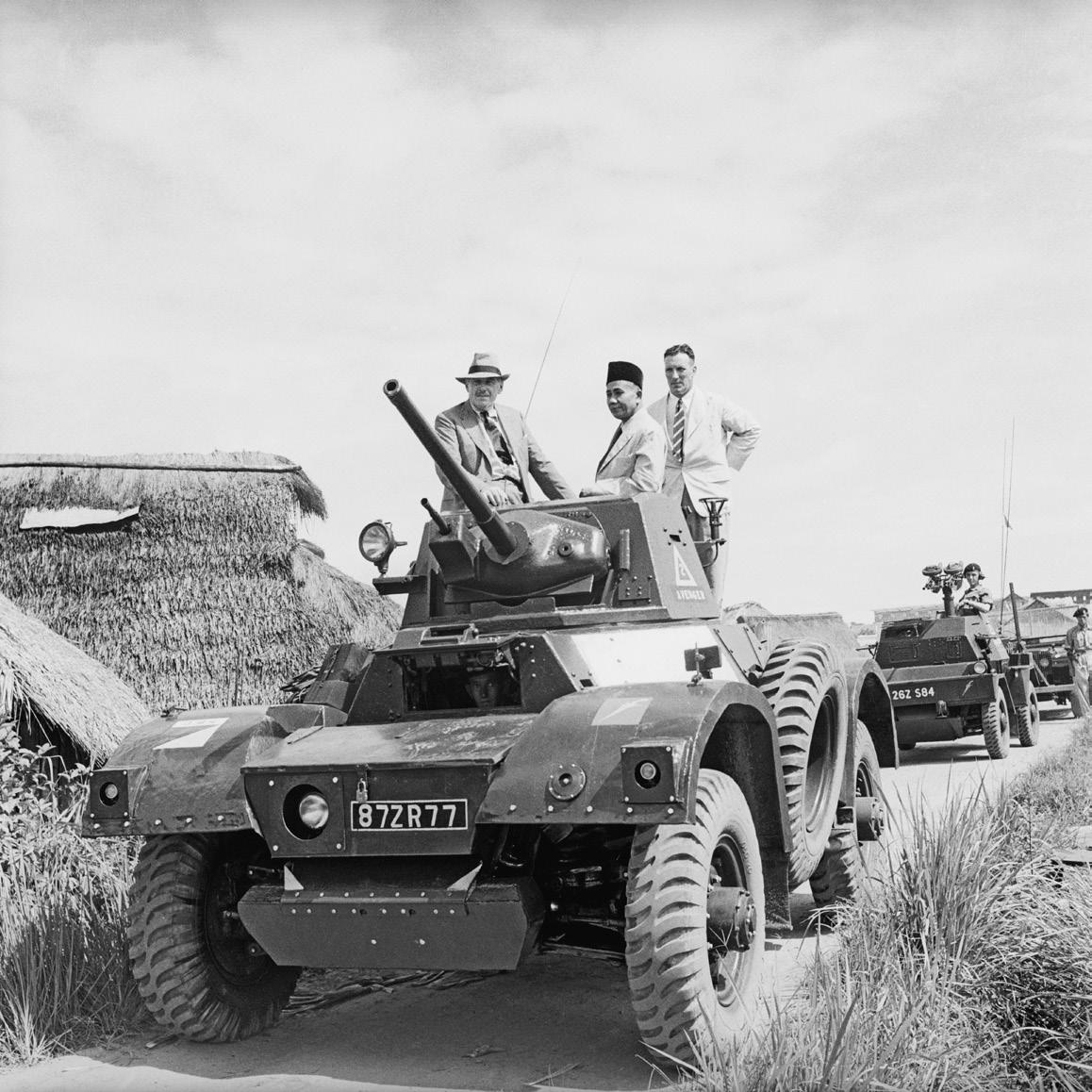
backlash to missionary proselytizing, was revived under the leadership of militant politicians with links to the trade unions and the criminal underworld in Nairobi. They sought to mobilize the Kikuyu masses, in the city and the country, by asking them to swear oaths of loyalty to a revolutionary movement that became known as Mau Mau. In 1952, as the colonial state awoke to the dangers of a brewing revolt, militants began killing Kikuyu who refused to take the oath, informed to the police, or collaborated with the British in other ways.58
The extraordinary brutality of the Kenya Emergency, which lasted from 1952 until 1960, was driven from the outset by roughly 30,000 white settlers determined to maintain their dominance over 5 million Africans. Although Mau Mau violence overwhelmingly targeted Kikuyu loyal to the British, a relatively small number of deadly attacks on settler families unleashed a spirit of vengeance. While pressuring officials to send in reinforcements and loosen constraints on the use of force, settlers
Figure I.1 Colonial secretary Oliver Lyttelton (left) rides a tank through a resettlement area in Johore, Malaya, 1951. PA Images.
also wielded violence directly: as soldiers in the Kenya Regiment and as volunteers for the Kenya Police Reserve, which operated at times like a vigilante force. Soldiers deployed to Kenya from Britain engaged in many of the same practices—beatings, torture, summary executions— as settlers did. As in Malaya, Emergency Regulations in Kenya allowed for curfews, food restrictions, collective punishments, and detention without trial. A hastily constructed police state swept much of the Kikuyu population into a byzantine network of detention camps where physical abuse, forced labor, and disease were endemic; as many as 70,000 people were detained at any one time, and some stayed behind the barbed wire for years. Over 1 million Kenyans were forcibly resettled in militarized villages on the Malayan model. 59 While casualty figures are highly uncertain, colonial forces killed at least 10,000, and perhaps more than 20,000, people classified as insurgents. At least 25,000 additional civilians died, including many children suffering from malnutrition caused by the dislocations of detention and resettlement. Just over 1,000 members of the colonial security forces were killed. 60

Figure I.2 A night raid by security forces in Kenya, 1952. This photograph by Bert Hardy, one of the foremost British chroniclers of counterinsurgency, was first published in Picture Post. Getty Images.
If the British war in Malaya was propelled by economic interests and in Kenya by settler interests, the war in Cyprus was a product of strategic calculations. Faced with a rising tide of nationalism in Egypt, the British military in 1954 shifted its Middle East headquarters to the eastern Mediterranean island hopefully described by officials as a “Commonwealth fortress.” Yet Cyprus had its own nationalist movement: the campaign for Enosis, or union with Greece, an aspiration of the ethnic Greek majority on the island dating back to the era of late Ottoman rule in the nineteenth century. It was an ideal rooted not just in linguistic affinity but in the culture of the Cypriot Orthodox Church, a cradle of irredentist politics. A fierce rivalry between the Greek community’s Orthodox, conservative right wing and its secular, Communist left wing—a mirror of Second World War–era divisions in Greece—drove the radicalization of nationalist claims at precisely the moment that the British were digging in. A guerrilla movement aligned with the church and led by veteran anti- Communist fighter George Grivas, EOKA (the Greek acronym for the Organization of Greek- Cypriot Fighters), launched a violent uprising against British rule in 1955 by planting bombs in government buildings. The state of emergency declared soon afterward would last for four years.61
The Cyprus conflict was not a typical anticolonial struggle. This was a right-wing insurgency, on the periphery of Europe, which sought annexation by another European country rather than independence. Partly as a result of these particularities, British counterinsurgency was much less deadly there than in Malaya or Kenya: official figures showed a total of 90 insurgents, 823 civilians, and 944 soldiers or police officers killed.62 Even so, the war acquired a reputation for brutality. This owed something to energetic propaganda efforts by Greek Cypriots and their allies as well as the island’s relative proximity to Britain and the Christian identity of the insurgents. It also reflected the reality of violence that was limited in some ways—especially by the efforts of a Greek Cypriot legal community capable of pressing claims in court—but far from immune to the indiscriminate and vengeful abuses of any counterinsurgency.63 Curfews, cordons, shop closures, and collective fines upended everyday life. House-to-house searches and mass round-ups involved casual violence by soldiers flaunting their dominance. Detention camps held roughly 2,000 prisoners at their peak in 1958. Suspects in custody were tortured, and several died under suspicious circumstances. After EOKA assassinated a British soldier’s wife in Famagusta in 1958, troops went on a rampage, resulting in smashed-up shops and homes, roughly 250 injuries, and at least two deaths.64
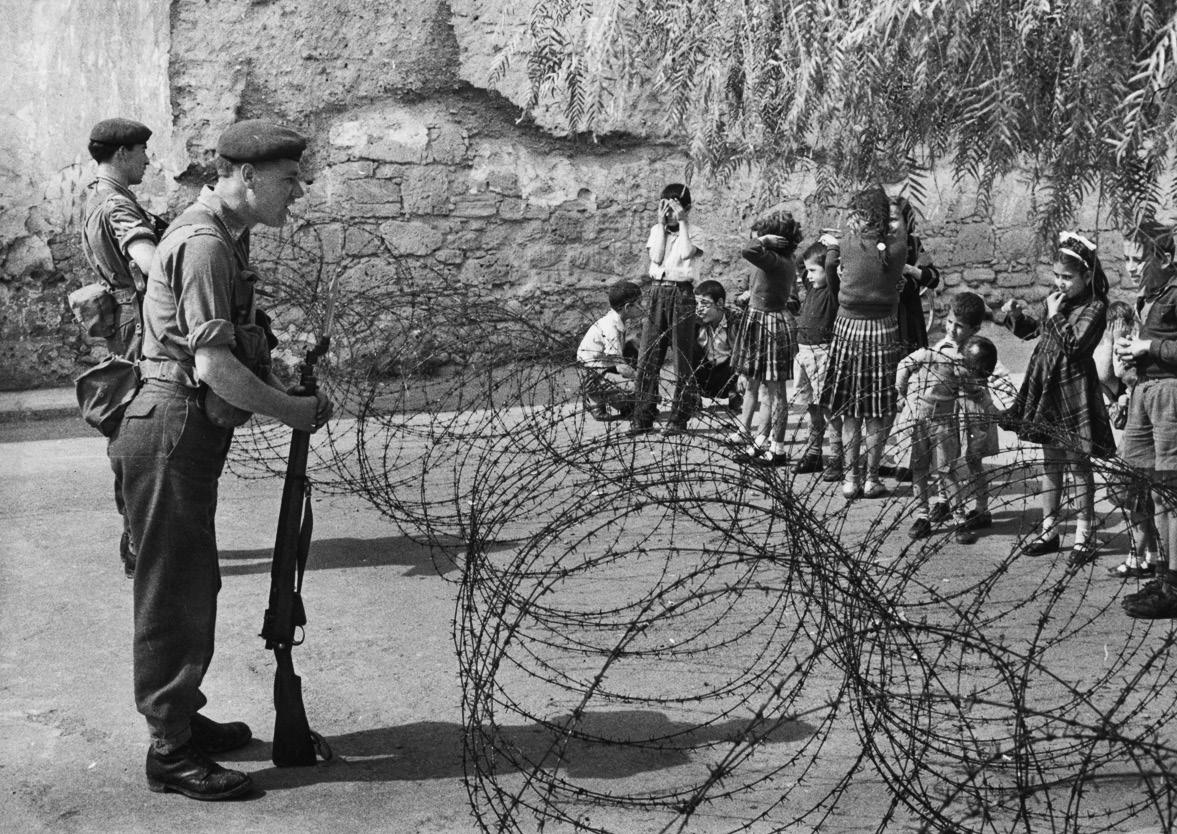
What, in the end, did Britain gain by the violence of counterinsurgency? In purely military terms, the Malayan National Liberation Army and the Mau Mau were defeated, while “battlefield” success against EOKA was more equivocal. But the postcolonial states that emerged from all three wars remained within the Anglo-American sphere of influence for decades afterward. In Malaya—which became an independent state in 1957, joined Singapore and several other territories to form the state of Malaysia in 1963, and split with Singapore two years after that—the post-independence regime was stoutly anti- Communist and business-friendly. In Kenya, which achieved independence in 1963, political leaders worked to bury the controversial Mau Mau legacy and exclude its veterans from power. The independent Kenyan state bought land at market rate from the white settlers who chose to leave and transferred much of it to former colonial loyalists. In Cyprus, the claims of the Turkish Cypriot minority—and, indirectly, the Turkish state—backstopped Britain’s steadfast refusal on Enosis. Greek Cypriot nationalists had to settle for a state independent from Greece as well as Britain, established in 1960, with power-sharing privileges for the ethnic Turkish population and swaths of territory carved out as sovereign British bases. While British expatriate minorities lost their lock on political power in all three cases—perhaps the chief achievement of decolonization—officials could congratulate themselves on forestalling more fundamental revolutions.
Figure I.3 British soldiers police a cordon in Cyprus, 1956. Bert Hardy/ Picture Post/Getty Images.
What might be reckoned a strategic victory by the British elite, however, was not experienced as a cause for celebration in Britain. Thousands of soldiers had been killed, and millions of pounds spent, in the name of an empire that no longer existed. Jomo Kenyatta and Archbishop Makarios, seen not long before as insurrectionist villains, were installed as heads of state in Kenya and Cyprus, respectively. Most of all, for those who lived through them, the wars themselves proved divisive and unsettling. While there was nothing new about brutality in the colonies, its reverberations were felt more deeply in Britain after 1945, for several reasons.
First was the legacy of the Second World War itself. To be sure, the war imparted no clear-cut lessons about state violence as far as contemporaries were concerned. The international organizations and treaties that emerged from the war were designed to perpetuate empires, and their capacity to use force, with minimal constraints.65 But the widespread belief that Britain had fought a good war, in moral terms, against Germany, did complicate responses to counterinsurgency. Critics of colonial war decried the “Gestapo tactics” and “totalitarian methods” perpetrated by British authorities, unnerving parallels that rang true for many observers and even, in private, for some stalwart imperialists. Defenses of colonial war, meanwhile, did not deny excessive or extralegal violence so much as they insisted on euphemisms like “rough handling” instead of torture, language meant to evoke garden-variety callousness rather than the ideologically motivated violence of Nazism.
Second, the colonial wars of the 1950s were fought in significant measure by conscripts rather than career soldiers. Setting aside the exceptional circumstances of the two world wars, this kind of mass conscription was unprecedented in modern British history. Between 1948 and 1963, every British man between the ages of seventeen and twenty-one was liable to be called up for military service, and while exact figures are impossible to calculate, perhaps 100,000 of them actually served in colonial conflicts. Because the pool of potential colonial warriors—to say nothing of their parents, siblings, friends, and lovers—was so large, colonial war represented a looming, inescapable presence in everyday life. With conscripts circulating in and out of conflict zones, letters, photographs, and other forms of evidence reached far beyond the world of professional fighting men. Some demobilized soldiers, radicalized by the brutality of the fighting, penned gruesome memoirs and novels to justify the violence in which they participated. Others, appalled by the tactics they observed, turned to left-wing activism when they returned home. Though only a small proportion of men called up for service ultimately registered as conscientious objectors, their protests revealed creeping
